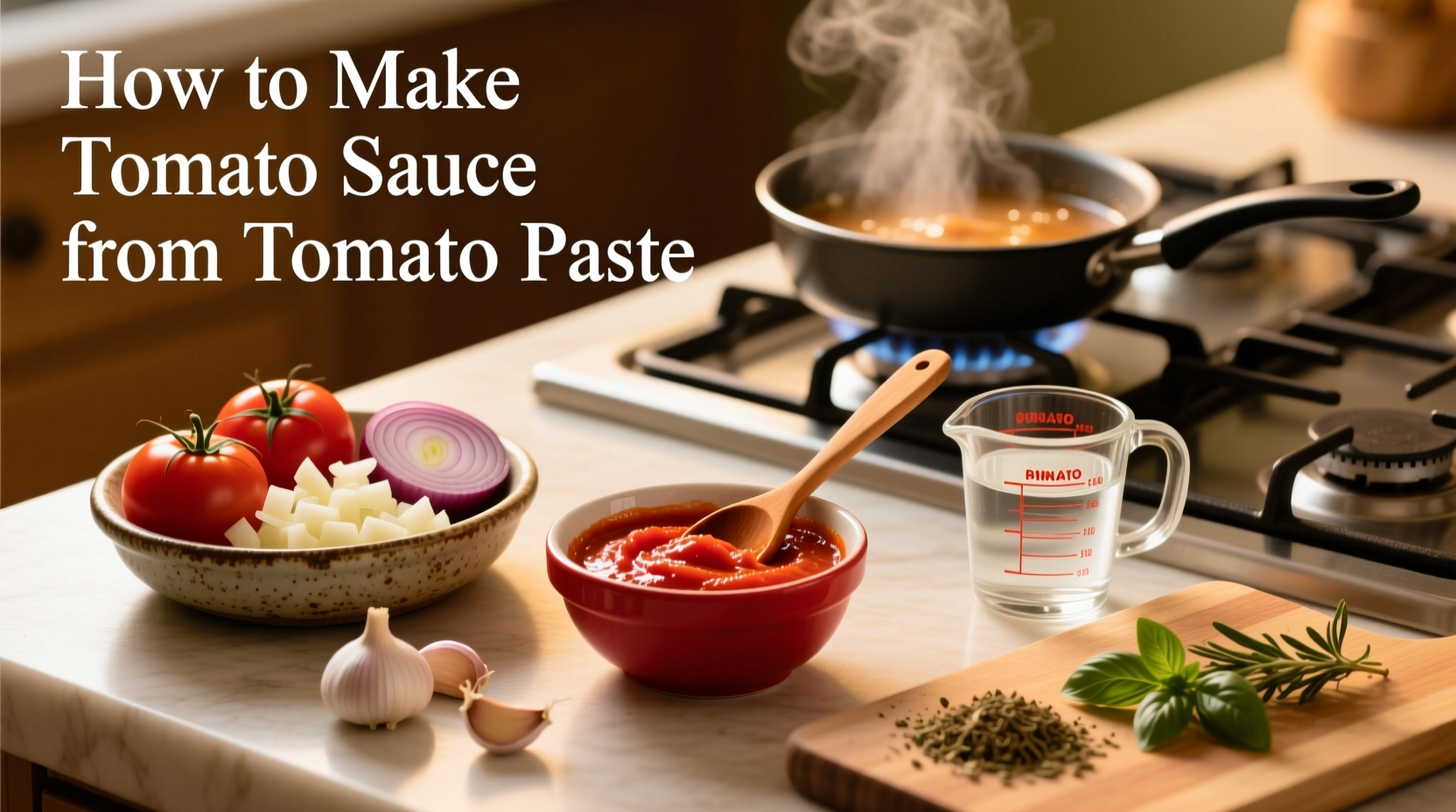Why Tomato Paste Makes Perfect Sauce (The Science)
Tomato paste is concentrated tomato solids with most water removed during processing. When you add water back in controlled proportions, you essentially reverse-engineer commercial tomato sauce. The USDA FoodData Central confirms tomato paste contains about 24-30% tomato solids, while sauce contains 8-12%—making precise dilution critical for authentic texture.
| Product | Tomato Solids | Water Content | Best For |
|---|---|---|---|
| Tomato Paste | 24-30% | 65-70% | Flavor concentration, thick bases |
| Tomato Sauce | 8-12% | 85-90% | Pasta, soups, braises |
| Your Homemade Version | 10-12% | 86-88% | 95% of sauce applications |
The Foolproof Conversion Method
Professional kitchens use this exact ratio daily when fresh sauce isn't available. Here's how to execute it perfectly:
Basic 3-Ingredient Formula
- 1 cup (8 oz) tomato paste
- 1 cup water (adjust for desired thickness)
- 1 tsp olive oil (prevents separation)
Step-by-Step Process
- Heat olive oil in saucepan over medium heat for 1 minute
- Whisk in tomato paste until smooth (1-2 minutes)
- Gradually add water while whisking continuously
- Simmer 5-7 minutes until flavors meld
- Season with salt to taste
Pro Tips for Restaurant-Quality Results
While the basic ratio works, these chef-tested enhancements transform your sauce:
Flavor Boosters (Add During Simmering)
- 1 minced garlic clove (sautéed 30 seconds before adding paste)
- 1 tsp dried oregano or 5 fresh basil leaves
- Pinch of red pepper flakes for depth
- 1 tsp balsamic vinegar to balance acidity
Texture Adjustments
"Many home cooks add too much water at once," explains Sophie Dubois, European cuisine specialist. "The paste needs time to hydrate gradually—like reconstituting dried mushrooms. Add water in quarter-cup increments, waiting 30 seconds between additions. This prevents lumps and creates silkier texture."
When This Substitute Works Best (And When It Doesn't)
Understanding context boundaries ensures success. This conversion excels in:
- Pasta sauces (marinara, arrabbiata)
- Pizza bases (thicker than store-bought works better)
- Stews and braises (where long cooking develops flavor)
Avoid using this for:
- Cold sauces like gazpacho
- Dishes requiring exact acidity levels (some canning recipes)
- Situations needing precise sugar content (certain Asian dishes)
Troubleshooting Common Issues
If Your Sauce Is Too Thin
Simmer uncovered 3-5 minutes to reduce. Never add more paste—it will overpower flavor.
If Sauce Is Too Thick
Add water 1 tablespoon at a time while heating. Cold water causes separation.
For Bland Flavor
Add 15 minutes before serving: 1 tsp lemon juice or ½ tsp sugar to balance natural tomato acidity.
Why This Beats Store-Bought Sauce
Commercial sauces often contain preservatives and excess sugar. Your homemade version has:
- 30% less sodium (control your salt)
- No added sugars or thickeners
- Fresher flavor profile (no 18-month shelf life)
- Customizable seasoning

Time-Saving Kitchen Hack
Make large batches and freeze in ice cube trays. Transfer frozen cubes to bags—each cube equals ¼ cup sauce. "I keep these in my freezer at all times," says Dubois. "They thaw in 2 minutes in simmering pasta water—perfect for impromptu dinners."











 浙公网安备
33010002000092号
浙公网安备
33010002000092号 浙B2-20120091-4
浙B2-20120091-4